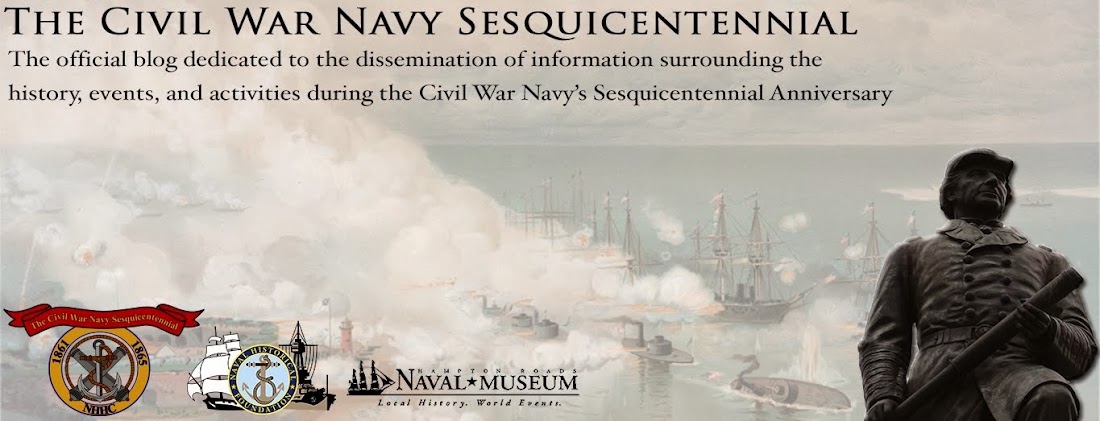The Confederate Navy never really had a presence in
Florida throughout the Civil War, mainly because of the lack of major ports
(e.g., Mobile, Charleston) and the decision by CSA leadership early in the war
to not expend resources defending the state. In early 1863, US Navy Secretary
Gideon Welles received reports of the construction of the Confederate gunboat
CSS Chattahoochee in Georgia, just
over the border with Florida. The main purpose of this ship was to protect the
vital industrial hub of Columbus, GA, along with other important Confederate
points on the Chattahoochee/Apalachicola River system. Rumors also appeared to
circulate that the ultimate purpose of this and other Confederate gunboats
being constructed on the river was to break the blockade of Apalachicola, at
the mouth of the river.
Welles sent orders to Rear Adm. Theodorus Bailey, commanding
the East Gulf Blockading Squadron, to conduct reconnaissance up the
Apalachicola River to ascertain the status of the Confederate gunboats on the
river, with a view towards eventually conducting sorties to destroy or capture
them. Bailey replied that, in his view, the extreme shallowness of the bar at
the mouth of the river (6 feet at extreme high tide) rendered it almost
impossible for any but the smallest gunboat to exit or enter the river. He
opined that the main purpose of these Confederate gunboats must be for river
defense, and that he could not send any warships up the river until
shallow-draft river gunboats from the Mississippi Squadron could be released to
him for use. That said, he maintained a flotilla of gunboats on patrol at the
mouth of the river to confront and deter any Confederate Navy sorties.
On 30 May 1863, the Chattahoochee
was anchored near Blountstown, Florida, about 78 miles above the mouth of the Apalachicola
River. Her commander, John J. Guthrie, was informed that a Union Navy cutting
out expedition had captured the blockade runner Fashion nearby, a schooner that had been loaded with cotton to run
the blockade. Determined to avenge this, and demonstrate to the Union
blockaders it was the Confederate Navy that controlled the river, he ordered
steam up. Something went terribly wrong during this procedure, and one or more
of the ship’s boilers exploded, killing 19 crewmen and injuring many others.
The ship sank to the bottom of the river. Tragically, this was perhaps the only
major effort by the CS Navy in Florida during the War, an effort that
unfortunately ended in disaster.
Based on intelligence from escaped slaves, Lt. Cdr. A. F.
Crosman of the USS Somerset, on
blockade at the river mouth, reported the destruction of the Chattahoochee to Adm. Bailey in early
June. The Confederates recovered all the ship’s guns for use on shore
batteries, and eventually raised the ship itself, which was brought to Columbus
for repair and refitting. She was deliberately destroyed at her moorings there in
April 1865 to prevent capture by Union forces at the end of the War.
Today you can view the
remains of this ill-fated warship (see photo above), along with a nice model and
painting of her, at the Port Columbus National Civil War Naval Museum in
Columbus, GA.


No comments:
Post a Comment